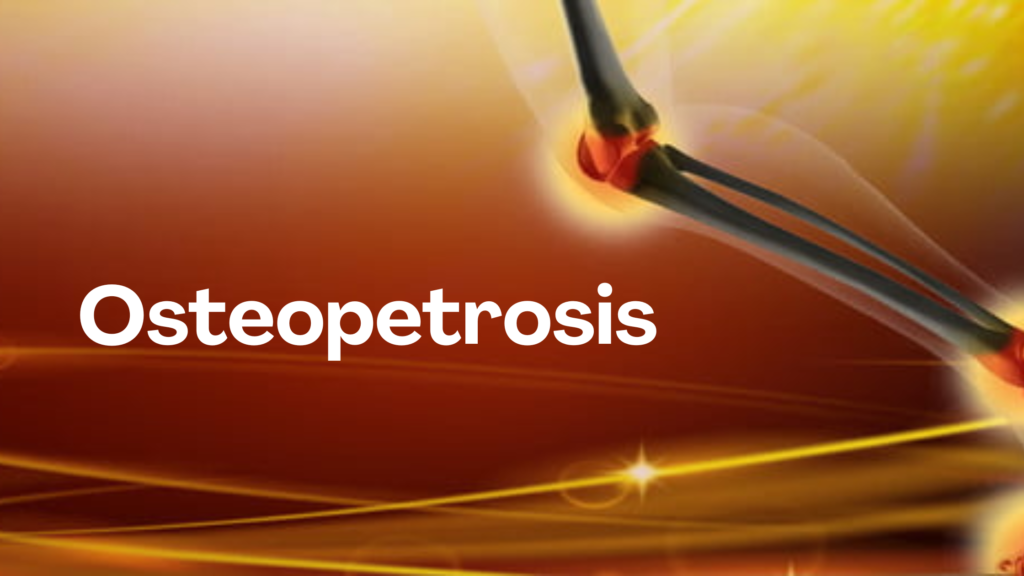Osteopetrosis, often called “stone bone disease,” is a rare genetic disorder where the bones become abnormally dense and hard because of a defect in the osteoclasts (the cells responsible for breaking down bone). This leads to bones becoming fragile and prone to fractures despite being very dense. Here’s a breakdown with emojis:
🦴 Abnormally Dense Bones:
- In osteopetrosis, bones become too dense (like stone), which makes them heavy and hard, but also weak and prone to breaking: 🏋️♂️🦴
🔨 Bone Fractures:
- The bones might look strong, but they are actually fragile and break easily: 💥🩹
🧬 Genetic Condition:
- Osteopetrosis is caused by mutations in genes that affect bone resorption. It is usually inherited in an autosomal recessive or dominant pattern: 🧬👨👩👧👦
🧠 Nerve Compression:
- The thickening of bones can lead to nerve compression, causing issues like hearing loss, vision problems, or numbness: 🧠👂👁️
🩸 Bone Marrow Problems:
- Osteopetrosis can interfere with bone marrow function, leading to anemia (low red blood cell count), bleeding problems, and immune system issues: 🩸💉🦠
⚠️ Symptoms:
- Fractures: 🦵💔
- Painful bones and joints: 🤕🦵
- Slow growth (in children): ⏳👶
- Vision and hearing loss: 👀👂
- Frequent infections: 🦠🤒
👩⚕️ Treatment:
There is no universal cure for osteopetrosis, but treatments can help manage symptoms and complications:
- Bone marrow transplants: 💉🦴
- Medications: To improve bone resorption or manage symptoms.
- Physical therapy: To manage pain and improve mobility: 🧑⚕️🦽
Types of Osteopetrosis:
- Infantile (severe): Present at birth, causing serious complications like bone fractures and vision/hearing loss in infancy: 👶💔⚡
- Adolescent (milder): Develops later in childhood or adolescence and usually has less severe symptoms: 🧑💬🦴
- Adult (mild): The least severe form, may be diagnosed in adulthood with minimal symptoms: 👩🦳🦴
